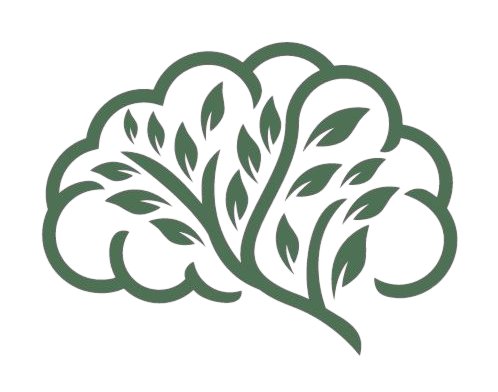Mental health is an essential component of our overall well-being, yet it is often overlooked or misunderstood. Mental disorders affect millions of people worldwide, causing emotional, psychological, and even physical distress. These disorders range from mild to severe and can impact an individual’s thoughts, feelings, behavior, and ability to function in daily life. Understanding the various types of mental health issues is key to reducing stigma and promoting early intervention and treatment.

Here’s a detailed exploration of some of the most common mental health disorders.
1. Anxiety Disorders
Anxiety disorders are among the most common mental health conditions, affecting millions of individuals globally. While everyone experiences anxiety from time to time, people with anxiety disorders experience excessive and persistent worry or fear that interferes with daily activities.
Types of Anxiety Disorders:
- Generalized Anxiety Disorder (GAD): Characterized by chronic worry and tension, even when there’s little or no reason to be anxious.
- Panic Disorder: Involves sudden, intense bouts of fear known as panic attacks, which can cause symptoms like heart palpitations, shortness of breath, and dizziness.
- Social Anxiety Disorder: Marked by extreme fear of social situations and being judged or embarrassed in public.
- Phobias: Intense fear of specific objects, situations, or activities, such as heights (acrophobia), flying, or spiders (arachnophobia).
2. Mood Disorders
Mood disorders primarily affect an individual’s emotional state. Those suffering from mood disorders experience prolonged feelings of extreme sadness, happiness, or a mix of both. These fluctuations can greatly impact a person’s ability to function.
Types of Mood Disorders:
- Depression (Major Depressive Disorder): A mood disorder characterized by persistent sadness, hopelessness, and a lack of interest in daily activities. It can also manifest in physical symptoms like fatigue, changes in appetite, and trouble sleeping.
- Bipolar Disorder: Involves alternating periods of depression and mania (elevated mood, hyperactivity, and increased energy). There are two primary types:
- Bipolar I Disorder: Defined by manic episodes lasting at least a week, often requiring hospitalization.
- Bipolar II Disorder: Involves hypomanic episodes (less intense than full mania) and severe depressive episodes.
- Cyclothymic Disorder: A milder form of bipolar disorder with mood swings that are less severe.
3. Obsessive-Compulsive and Related Disorders
Obsessive-compulsive and related disorders involve patterns of obsessive thoughts and compulsive behaviors. Individuals with these disorders may engage in repetitive actions to reduce distress caused by their obsessive thoughts.
Types of Obsessive-Compulsive Disorders:
- Obsessive-Compulsive Disorder (OCD): Characterized by unwanted, intrusive thoughts (obsessions) and repetitive behaviors (compulsions), such as hand-washing, counting, or checking things repeatedly.
- Body Dysmorphic Disorder (BDD): Involves a preoccupation with perceived flaws or defects in physical appearance that are often not noticeable to others.
- Hoarding Disorder: Marked by an inability to discard possessions, regardless of their value, leading to clutter that disrupts living spaces.
4. Trauma- and Stressor-Related Disorders
These mental disorders occur following exposure to a traumatic or stressful event. They can lead to intense fear, anxiety, and other emotional disturbances.
Types of Trauma- and Stressor-Related Disorders:
- Post-Traumatic Stress Disorder (PTSD): Develops after exposure to a traumatic event such as war, assault, or a natural disaster.
- Acute Stress Disorder: Similar to PTSD, but the symptoms occur immediately after the trauma and last for a shorter duration (typically up to a month).
- Adjustment Disorder: Involves emotional and behavioral symptoms in response to a specific stressor, such as a job loss or divorce, which causes significant disruption in daily functioning.
5. Psychotic Disorders
People with psychotic disorders often experience delusions (false beliefs) and hallucinations (seeing or hearing things that aren’t there).
Types of Psychotic Disorders:
- Schizophrenia: A severe mental health disorder involving chronic or recurrent episodes of psychosis. Symptoms include delusions, hallucinations, disorganized thinking, and reduced emotional expression. Schizophrenia typically begins in early adulthood and requires long-term treatment.
- Brief Psychotic Disorder: A short-term psychotic episode that may last less than a month, often triggered by a traumatic or stressful event.
6. Personality Disorders
Personality disorders involve enduring patterns of behavior, cognition, and inner experience that deviate significantly from cultural expectations. These patterns are rigid and pervasive across many situations, impairing social, occupational, and personal functioning.
Types of Personality Disorders:
- Borderline Personality Disorder (BPD): Characterized by unstable moods, relationships, and self-image, along with impulsivity and intense fear of abandonment.
- Narcissistic Personality Disorder (NPD): Involves an inflated sense of self-importance, a need for excessive admiration, and a lack of empathy for others.
- Antisocial Personality Disorder: Marked by a disregard for the rights of others, deceitfulness, impulsivity, and often a history of criminal behavior.
- Avoidant Personality Disorder: Involves feelings of inadequacy, sensitivity to criticism, and extreme social inhibition.
7. Eating Disorders
Eating disorders are characterized by unhealthy eating behaviors and extreme concern with body weight or shape. These disorders can lead to serious physical health problems, as well as emotional distress.
Types of Eating Disorders:
- Anorexia Nervosa: Involves extreme food restriction, an intense fear of gaining weight, and a distorted body image, leading to severe weight loss and malnutrition.
- Binge-Eating Disorder: Involves episodes of eating large quantities of food, often in secret, and feeling a loss of control over eating, followed by guilt or distress.
8. Neurodevelopmental Disorders
Neurodevelopmental disorders begin in childhood and involve developmental deficits that can affect personal, social, and academic functioning.
Types of Neurodevelopmental Disorders:
- Autism Spectrum Disorder (ASD): A developmental disorder that affects communication, behavior, and social interaction. People with ASD may have repetitive behaviors and difficulties in understanding social cues.
- Attention-Deficit/Hyperactivity Disorder (ADHD): Involves inattention, hyperactivity, and impulsivity that interfere with functioning. Symptoms often start in childhood and can persist into adulthood.
- Learning Disabilities: Affect an individual’s ability to process information, leading to difficulties in reading (dyslexia), writing, or math (dyscalculia).
Conclusion
Mental disorders are complex and varied, each with its own set of symptoms and challenges. Understanding the different types of mental health disorders can help reduce stigma and foster empathy and support for those affected. If you or someone you know is struggling with any of these conditions, seeking professional help is crucial. Early intervention and treatment can significantly improve quality of life and lead to better long-term outcomes.
Whether it’s anxiety, depression, personality disorders, or neurodevelopmental challenges, mental health issues require care, understanding, and a supportive environment.

